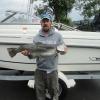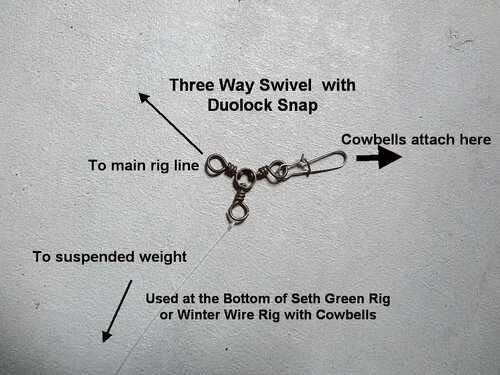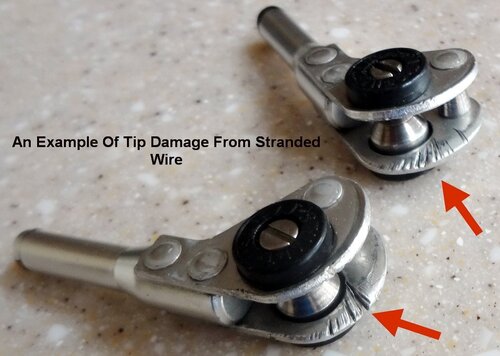-
Posts
13,806 -
Joined
-
Last visited
Content Type
Profiles
Forums
Events
Gallery
Store
Posts posted by Sk8man
-
-
Be aware though that the designated sizes are not the same for all manufacturers.
-
A few things come to mind: first of all fishing them in a pond can be quite different than in a Finger lake for example. They may or may not use the inlet or outlet. They are largely bottom feeders and prefer sandy or mud bottoms and usually are found scrounging things from those bottoms. They use their feelers around their mouths to feel for food rather than relying just on eyesight per se so they can be quite successful in muddy or murky water. I am mentioning this as it relates to the particular way you fish for them which can vary considerably. An important consideration is wind direction. Usually the most success is with the wind coming towards you because they follow the migration path from wind driven current underwater of whatever they can find and often near bottom, but they are attracted to movement detected by their feelers for moving worms, leeches or left over waxies or spikes from ice fishing dangling a foot or two off bottom can also be effective. They seem to be highly attracted to smelly/rotten things as well e.g. pieces of shrimp way past its prime, pieces of dead fathead minnows etc. Although they can be caught in the daytime most of their concentrated activity occurs at night as they are not as dependent as some species on vision for locating their food. As far as the pond situation you described I would position myself near the mouth of an inlet or outlet with the wind blowing toward you when the water is murky and at night just as dark approaches using a lantern or light with the side toward you blocked (we used to use aluminum foil on the half facing you to block the glare and enable you to see your lines clearly. Sometimes a small piece of broken styrofoam cup and pe placed on your line to help see the line go ou.t Find some shrubs a or bushes nearby and cut some forked sticks to use as rod holders to place your rods on. Cast out aways and put allow a "u shaped" loop in your line don't totally tighten it so that you can detect when they pick up the bait as they can be very light biters. The setups can be as you described, but I have always had success with a typical perch rig type setup with bell sinker at bottom and one or two hooks either tied directly to the line , or a two inch loop with hook suspended. In the daytime they may be caught with typical bobber setups with the line suspended just above the bottom in murky or muddy water. The version tied directly detects bites more quickly but they may also detect the tension while the loop version is not quite as quick to sense the bite. So there you have it....Bullhead 101

P.S. Small red (striped) manure worms in small gobs work great too.
-
Congrats on a hell of a day!

-
Just a point of information. The minimum size limit for Bass on Hemlock is 12 inches.
-
-
Looks more like Splake - hybrid between male laker and female Brookie?
-
The most effective setup for cowbells (if not using a downrigger) is the use of a weight (I use 32-40 oz.)which you can get from Troutman87 on here very reasonably and suspended about 18 inches from a three way swivel as a "dropper weight". You want this to make contact with the bottom as you troll slowly about 1.4 mph. The cowbells will be straight back from the other ring of the swivel (with a heavy duty Duolock snap on it) with the third hooked to a heavy duty swivel on the main line. You run the rig as close to the bottom as you can feeling it keep touching bottom as you go along. Generally you start in shallower than you end up letting out mainline as you go keeping the contact with the bottom. If using bead chains on your rig line an additional leader with a spoon can be used where the leader is long enough to follow behind the cowbells (e.g. 20 ft long) and located about 3-4 ft above the cowbells. This is where the term "cheater" line came from back in the old days.
-
1 hour ago, mr 580 said:
I have a Simrad autopilot with Seastar steering and the install took less than a quart of fluid to bleed and fill. IMO with the small amount of oil used there is little savings or reasons to use anything other than a manufacturer oil or a manufacturer accepted spec oil. Not worth risking a pump or system failure.
x2
-
Rick has given you very good advice. The Airmar's are excellent transducers and hold up well. The better matched a transducer is to your unit and trolling the better the performance. Transducers can go bad over time and although usually they totally crap out when they do but I have had one over the years that acted just as you described it. Best solution get a transducer that is better adapted to your situation and Airmar has a whole range of them for that purpose. Make sure when installed it is free from any surface turbulence from chines or strakes on the hull and that it isn't too far toward the outside of the hull and many times they need to be angled forward or backward ever so slightly.
-
Regardless of size get ball bearing AND solid ring NOT split ring swivels. If a knot slips on the split ring it can wedge in the depression of the split ring which is sharp and potentially cut the line (don't ask how I know this)

-
In these days of litigation and ambulance chasing lawyers there is a substantial liability issue as well for the landowner and I would also wonder how the property insurers would be reacting too.
-
One of the main reasons there is a paucity of access on many tribs is the problem of littering and it is a hell of a concern for property owners no matter what the one time money is and it is really too bad. A lot of the streams I used to fish in the 60's and 70's haven't been accessible for that reason for years.
-
Ifishy's tip about the 19 strand is a good one. If you are going to use 7 strand wire you'll need either a twilli or roller tip although the individual rod eyelets composition are a question mark. I use Shakespeare Tidewater 6 1/2 ft rods with Allen roller tips and first guide a roller with 7 strand and have no problems for my short rods, and Okuma GLT in 8 1/2 ft for my longer dipsies. On one I have an Allen roller tip and the other a twilli and I haven't notice any wear on any of the guides or tip thus far after about 5 years use. Not sure about extended time frame though as 7 strand is very abrasive. Here is a pic of what it can do to aluminum side plates on inexpensive roller tips.
-
 1
1
-
-
Looks like you folks kicked some fish butt Bill

-
Great video and Pete is not your average "tree hugger"

-
 1
1
-
-
Years ago security told me they would tow me if I parked there again and they took down my license plate number so I figured it wasn't worth the hassle.
-
Send Greg (troubles) a PM good reputable guy and makes good stuff reasonably.
-
 1
1
-
-
Good luck with it

-
Looks like you're good to go Nice rig by the way.
 Give them a try and see how you like them. They are always a good standby anyhow.
Give them a try and see how you like them. They are always a good standby anyhow.
-
You mentioned the outrigger poles but not whether you have the holders installed as they are the expensive part of the equation. I've used outriggers for many years and have used both the aluminum poles and the fiberglass. The aluminum are better as they don't flex as much. The type and positioning of the holders are important as you want the angle to be fairly low to the water but high enough that the poles don't drag the surface in the waves. Usually positioned about 45 degrees or so.
A lot of folks used to use outriggers but in recent years the big boards and then inlines (or both) have pretty much taken over. Each approach has its strengths and weaknesses. The inlines are the most convenient, and easily adjusted, the big boards excel in rougher water and at handling bigger setups (e.g. long coppers etc.) but properly set up outriggers can not only run multiple lines like the big boards but they and ward off traffic (e.g. in derbies) where people can see them for long distances. On the downside contrasted with the inlines and some of the big boards they aren't as maneuverable in in terms of regulating the distances from the boat lures are run horizontally from the boat. In very rough water they can "slap" the water surface (especially if not installed at the proper angle) but when it is that rough even the boards can suck too
 . If you intend to run heavy stuff (e.g. 600 coppers etc.) big boards from a mast may be preferable. For toplining, running short coppers or leadcores, and running small to medium dipsies the outriggers will suffice. I have tried many releases for the outriggers over the years and for the main release I stick with the Black outrigger model release (very adjustable and predictable tension). For additional lines run on them I used homemade rubberband releases with shower hooks which I could just slide down the outrigger line (sometimes I weighted them to slide better).
. If you intend to run heavy stuff (e.g. 600 coppers etc.) big boards from a mast may be preferable. For toplining, running short coppers or leadcores, and running small to medium dipsies the outriggers will suffice. I have tried many releases for the outriggers over the years and for the main release I stick with the Black outrigger model release (very adjustable and predictable tension). For additional lines run on them I used homemade rubberband releases with shower hooks which I could just slide down the outrigger line (sometimes I weighted them to slide better).
-
Looks as though you know your scotch as well as the fishing

-
 1
1
-
-
I think you may apply at the following number for both the sporting license and the marine version 1-866-933-2257
-
-
Duck 1 you have a PM





What kind of fish is this
in Open Lake Discussion
Posted · Edited by Sk8man
It isn't a Common Shiner as the body shape isn't right (shiner wider and almost hump shaped back and the fins are orangish.
As far as the Spot Tail Shiner have a look at this pic and note the spot https://nas.er.usgs.gov/queries/factsheet.aspx?SpeciesID=596